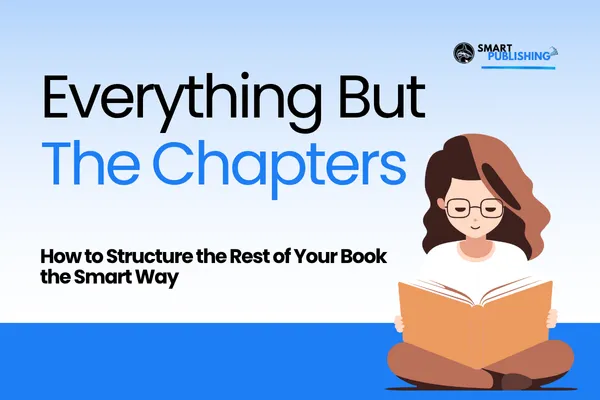
Everything But the Chapters: How to Structure the Rest of Your Book the Smart Way
Everything But the Chapters: How to Structure the Rest of Your Book the Smart Way
Smart Publishing Impact Series – Episode 26
Most authors focus heavily on their chapters—and rightfully so. That’s where your message lives, your story unfolds, and your expertise shines.
But there’s a whole other side to your book’s structure that too many writers overlook.
Today, I’m diving into everything that’s not a chapter. From your copyright page to your dedication, from your foreword to your conclusion, we’re covering the hidden framework that makes your book feel professional, polished, and purposeful.
Let’s break down each section and talk about how (and when) to use them.
The Copyright Page: More Than Just Legalese
Don’t underestimate this page—it’s where you not only protect your content but also honor your creative team.
At a minimum, include:
Your copyright claim (e.g., © 2025 Your Name)
“No part of this book may be reproduced…” disclaimer
Credits to your editor, designer, formatter
Limitations of liability and any necessary disclaimers (especially if you write on health, finance, or legal topics)
Want next-level protection? Register your copyright officially with the U.S. Copyright Office—it’s $65, easy to file online, and worth it for peace of mind.
Dedication vs. Acknowledgments: What’s the Difference?
Dedication is short—one to three sentences. It’s heartfelt and personal.
Example: “To my daughter, who reminds me every day why this work matters.”
Acknowledgments, on the other hand, come at the back of the book and can be as long as you want. This is your Oscar speech moment—thank your team, your family, your dog. Just not on the dedication page.
Table of Contents: Think Strategically
Your TOC isn’t just a menu—it’s a navigation tool, especially for Kindle readers. I always recommend putting the TOC before the foreword so your foreword shows up in the clickable links (and actually gets read).
Include every major section: foreword, introduction, chapters, conclusion, acknowledgments, appendix—whatever applies.
Foreword vs. Prologue vs. Introduction
Foreword (with an “e”): Written by someone else. Think influencer, expert, mentor—someone who validates your credibility.
Prologue: Usually for memoirs or fiction. It sets the stage, adds background, or kicks off the story.
Introduction: Written by you, the author. It tells readers what to expect, who the book is for, and how to use it. If your book is structured in parts, this is where you explain the flow.
Conclusion, Epilogue, Postscript, Afterword—Which One Do You Need?
Conclusion: Wraps up your nonfiction book. Reinforces key takeaways, includes a call to action, and brings closure.
Epilogue: Great for memoirs and fiction. It’s a “what happened after” update.
Postscript (P.S.): Optional. Casual and informal—like a bonus note.
Afterword: Like a postscript, but longer and more reflective. Great for content that didn’t fit elsewhere or came after the book’s original release.
Appendix & Index: Only If You Need Them
These are optional but helpful in educational, research-heavy, or technical books.
Appendix: Extra materials, worksheets, templates, charts.
Index: An alphabetical list of topics with page numbers. Best for reference-style books.
About the Author: Keep It Inside
Please, please, don’t put your photo and bio on the back cover. It screams “self-published promotional piece.”
Instead, include a custom About the Author page inside your book. Make it relevant to the book’s topic—not just a copy-paste from LinkedIn. Even my two books have different bios because they serve different audiences and purposes.
Final Thoughts
When you understand the purpose of each section of your book, you write and publish smarter. You build credibility. And most importantly, you give your reader a better experience.
Need help structuring your book? That’s exactly what we do at Smart Publishing.
Let’s make your book look like it came off the shelves of a top-tier publisher—because your voice deserves that level of excellence.
Keep writing your story, because the world needs your voice.
—Renee
